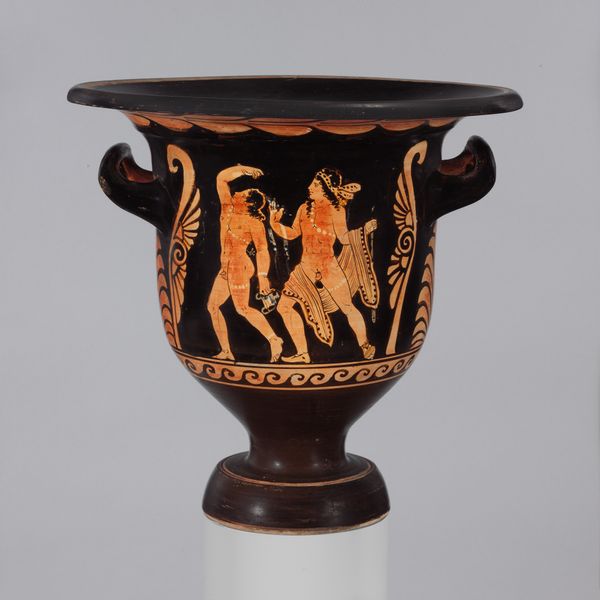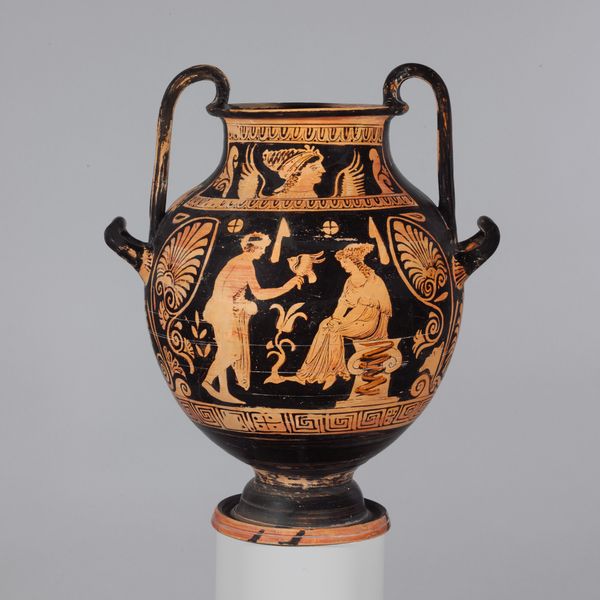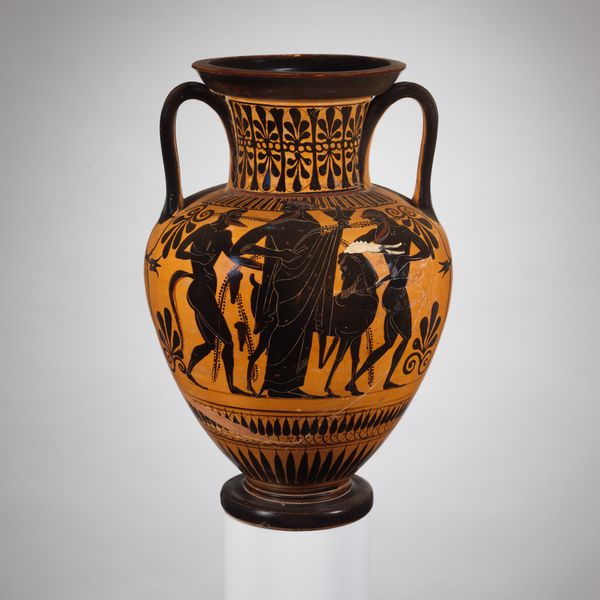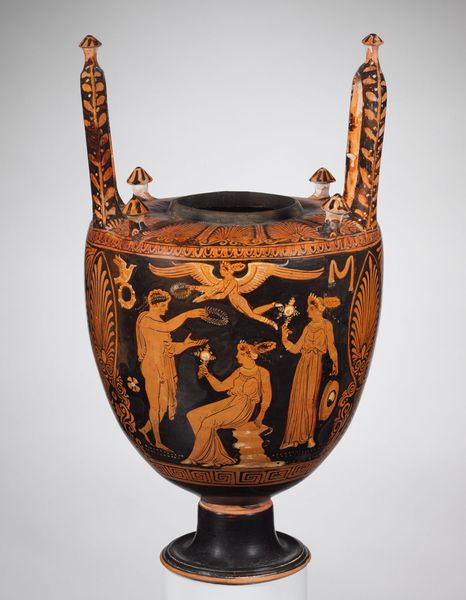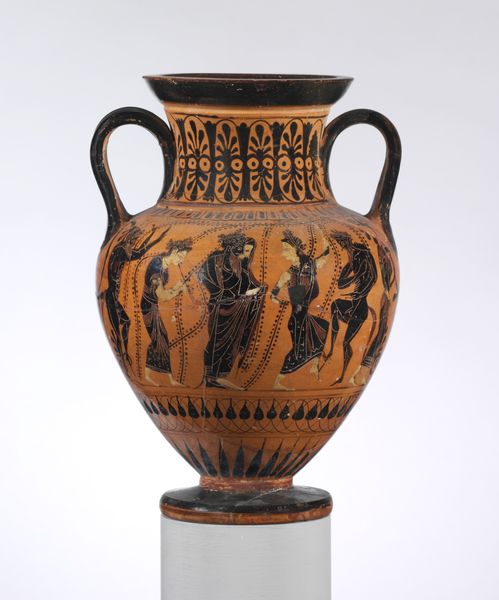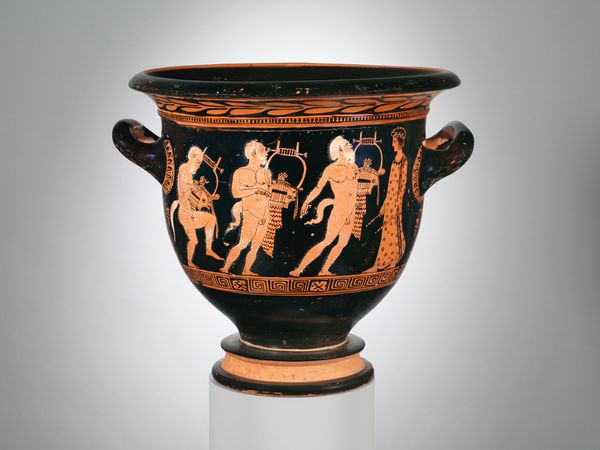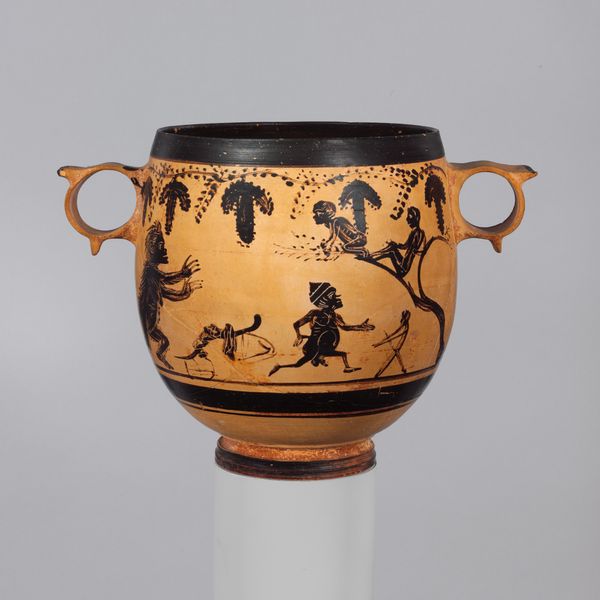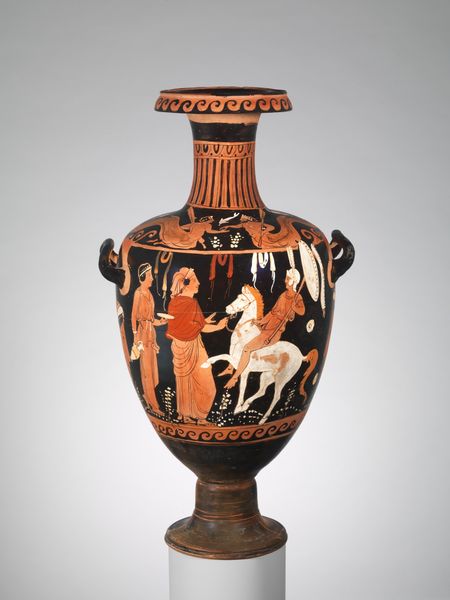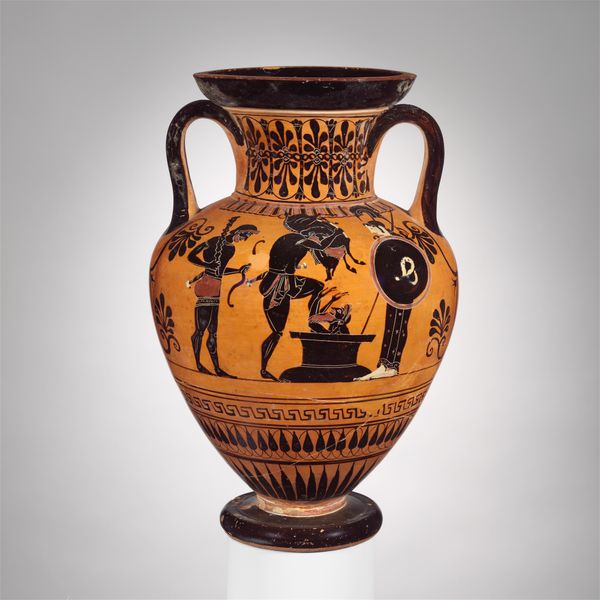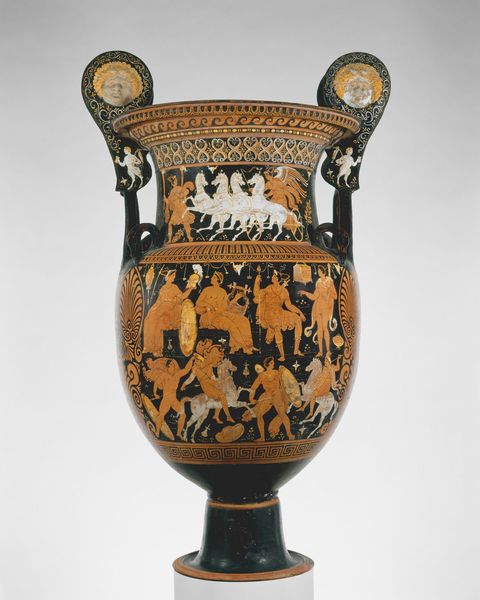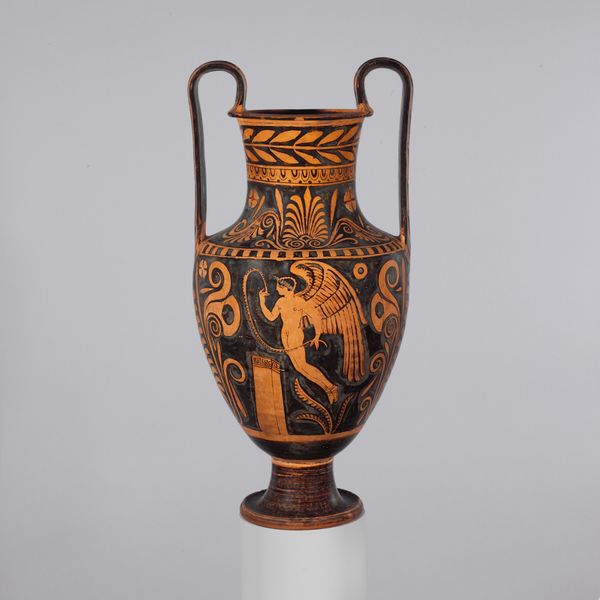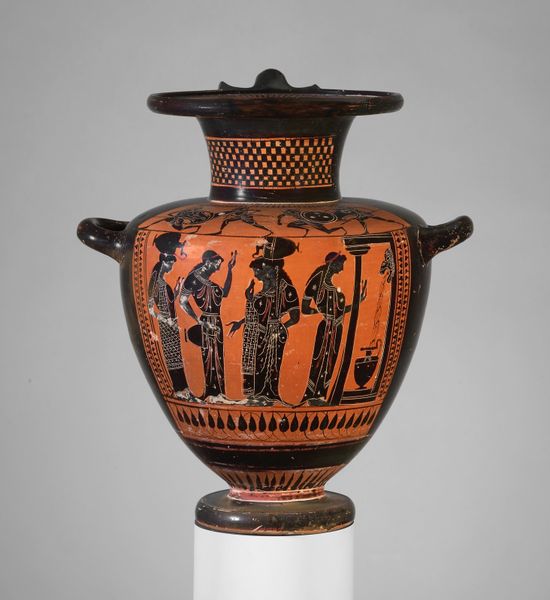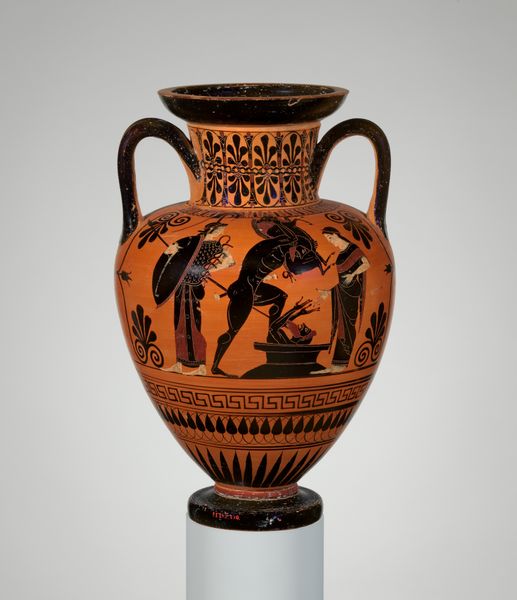
ceramic
#
narrative-art
#
greek-and-roman-art
#
ceramic
#
figuration
#
roman-art
#
ancient-mediterranean
#
ceramic
Dimensions: H. 14 5/16 in. (36.4 cm)
Copyright: Public Domain
Curator: Let’s examine this terracotta stamnos, a jar crafted around 350 BC, and currently held in the collection of the Metropolitan Museum of Art. Editor: Immediately, I’m struck by the stark contrast between the figures and the black background. It creates a visually arresting composition. Curator: Indeed. It is an excellent example of narrative art. We can delve into how its imagery speaks to the historical and societal roles prevalent in Ancient Greece. Look at the depiction of these men. The nudity signifies power and status. Editor: The positioning and anatomical construction also serve an aesthetic function, creating dynamic tensions within the frieze. The linear arrangement of figures and abstract decoration showcases an intricate balance. Curator: Absolutely, but considering the cultural context, the scene’s display may be linked to concepts of masculinity, triumph, or even conflict in Greek society, echoing power structures where men and war are elevated above other roles. What is this vessel used for, within its time? What were these scenes meant to communicate about personhood? Editor: Focusing purely on its form, notice how the artist has used a restricted palette to enhance clarity and focus. The repetitive patterns offer a rhythmic structure—it's a study in geometric elegance and symbolic efficiency. Curator: Though we shouldn’t forget that those patterns were used to give context and symbolic meaning of this scene; it is more than simply art for art's sake. They were visual signifiers deeply embedded in the era's social language. Even the vessel’s function, presumably storage or serving, places it in a particular stratum of social practice and value. Editor: Agreed. But even those readings originate from our interpretation of shapes, lines, forms and functions. Considering art objects as formal structures first grants them autonomous existence, so, from here we can proceed and debate context and meaning. Curator: Perhaps! This approach encourages us to be reflexive on interpreting what’s there. Thank you for lending your eye and analysis to such a compelling artifact of art. Editor: The dialogue illuminates new ways to appreciate art. And thank you.
Comments
No comments
Be the first to comment and join the conversation on the ultimate creative platform.
